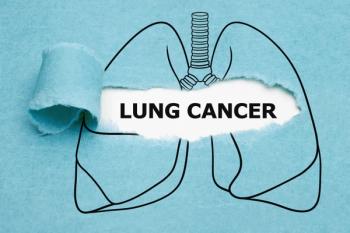
Women Have Lower Mortality Than Men After Lung Cancer Surgery
Women had higher survival rates after lung cancer compared with men, regardless of other risk factors, in a population-based registry study from the Karolinska Instituet in Sweden.
Past studies have yielded conflicting results on overall disease risk and survival in women vs men when it comes to lung cancer, at times pointing to a survival advantage in women. The study authors aimed to identify potential
"The healthcare sector is always striving to offer all patients equal treatment tailored to their individual needs," study first author Erik Sachs, MD, PhD, resident in cardiothoracic surgery at Karolinska University Hospital and doctoral student at the Department of Molecular Medicine and Surgery at Karolinska Institutet, said in a statement.3 "This kind of study can help shed light on systematic differences that ultimately affect patient outcomes."
The national, population-based registry study used the Swedish national quality register for general thoracic surgery (ThoR) to identify 6536 patients (56% women, 44% men) who underwent lung cancer surgery between 2008-2017. The mean age was 67 years for women and 68 years for men. Follow-ups were done 1, 5, and 10 years after surgery.
Researchers took a wide range of factors into account when assessing survival differences, including socioeconomic differences, age, smoking status, comorbidities, tumor stage and characteristics, and the type and extent of surgery performed. Less women were smokers, and they had a lower incidence of comorbidies than men. Still, the study suggested that in the post-surgery setting, women appeared to fare better than men even when controlling for a wide range of prognostic factors, with a 27% lower risk of death than men (HR, .73; 95% CI, 0.67-0.79).
The survival gap also increased over the years. At 1, 5, and 10 years after surgery, the absolute survival difference was 3.0% (95% CI, 2.2%-3.8%), 10% (95% CI, 7.0%-12%), and 12% (95% CI, 8.5%-15%), respectively. The difference in restricted mean survival time at 10 years of follow up was 0.84 years (95% CI, 0.61-1.07). The findings held true across subgroups and in all age categories, although the difference was less pronounced in patients younger than 60 years of age.
"Our findings are significant, as they suggest that the prognosis for lung cancer can likely be improved, but more research is needed in this area," study author Veronica Jackson, MD, PhD, researcher at the Department of Molecular Medicine and Surgery, Karolinska Institutet, specialist in thoracic surgery, said. "Further studies that specifically investigate the effects of lifestyle, sociocultural conditions and the presence of any inequalities in the delivery of care would likely be of value."
References
1. Key Statistics for Lung Cancer. American Cancer Society. Updated January 8, 2020. Accessed December 11, 2020.
2.Sachs E, Sartipy U, Jackson V. Sex and survival after surgery for lung cancer: A Swedish nationwide cohort. Chest. Published online November 16, 2020. Accessed December 11, 2020. doi: 10.1016/j.chest.2020.11.010
3. Better survival among women after lung cancer surgery. News Release. Karolinska Instituet; November 23, 2020.
Newsletter
Stay ahead of policy, cost, and value—subscribe to AJMC for expert insights at the intersection of clinical care and health economics.








